Hall Current 14 Click
R590.00 ex. VAT
Hall Current 14 Click is a compact add-on board that contains a precise solution for AC/DC current sensing. This board features the MCS1801, a fully integrated Hall-effect-based isolated linear current sensor designed for the current range of ±25A from Monolithic Power Systems (MPS). The galvanic isolation between the pins of the primary copper conductive path and the sensor leads allows the MCS1801 to replace optoisolators or other isolation devices. Applied current flowing through this copper conduction path generates a magnetic field that the differential Hall sensors convert into a proportional voltage, where after that, the user is given the option to process the output voltage as an analog or digital value. This Click board™ is ideal for applications requiring a combination of high-current monitoring and high isolation voltage between the primary high-current and low-voltage sides.
Hall Current 14 Click is supported by a mikroSDK compliant library, which includes functions that simplify software development. This Click board™ comes as a fully tested product, ready to be used on a system equipped with the mikroBUS™ socket.
Stock: Lead-time applicable.
| 5+ | R560.50 |
| 10+ | R531.00 |
| 15+ | R501.50 |
| 20+ | R482.62 |

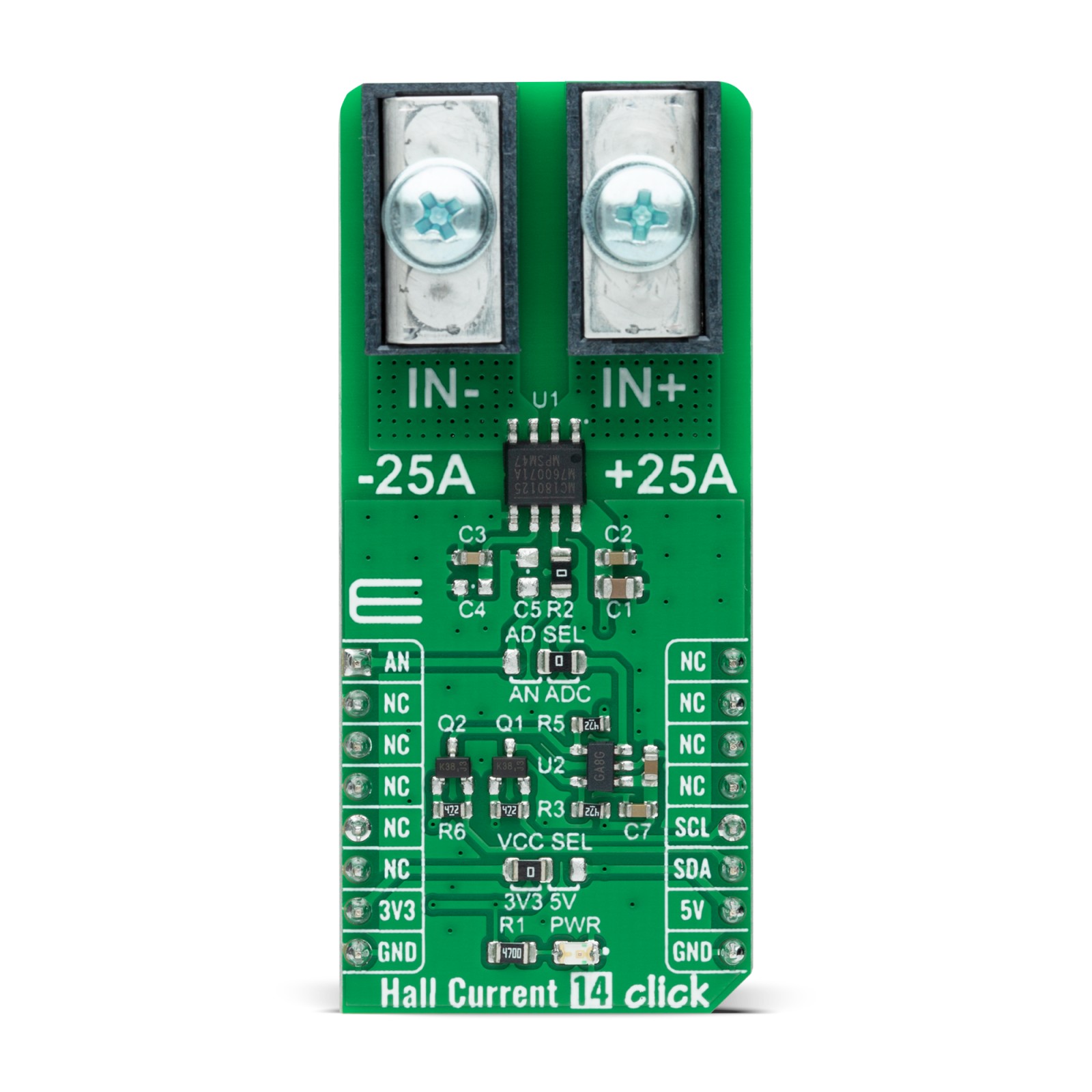

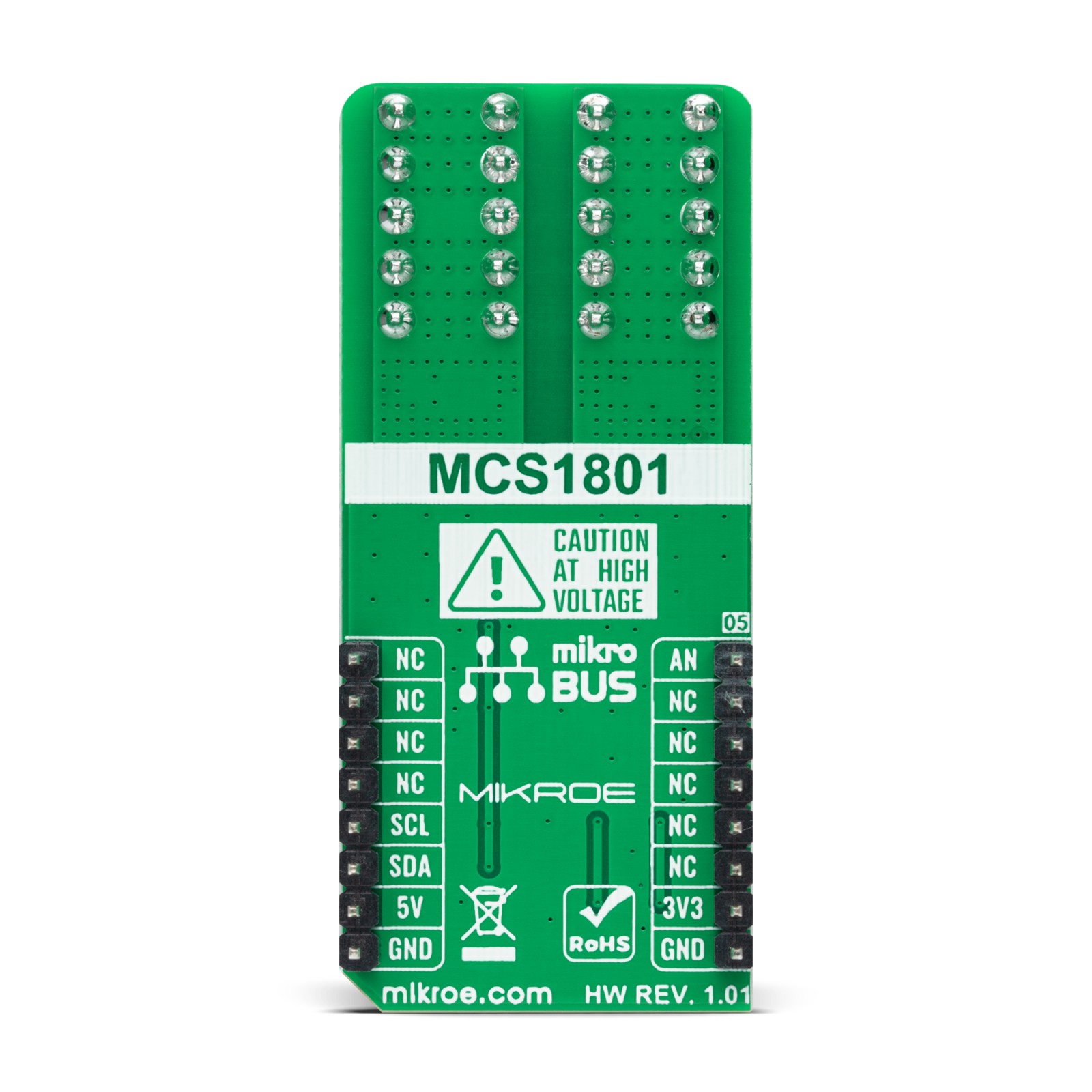

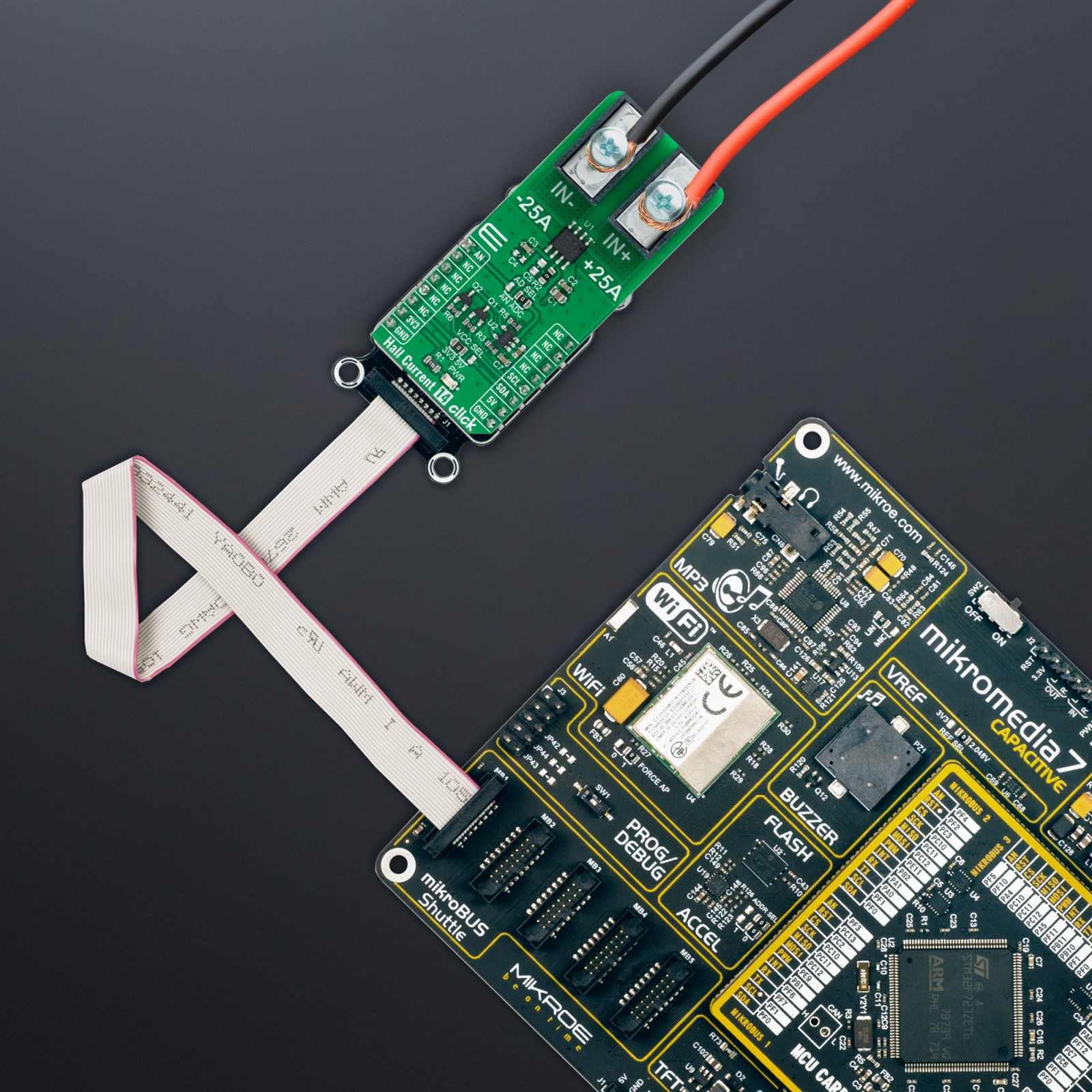
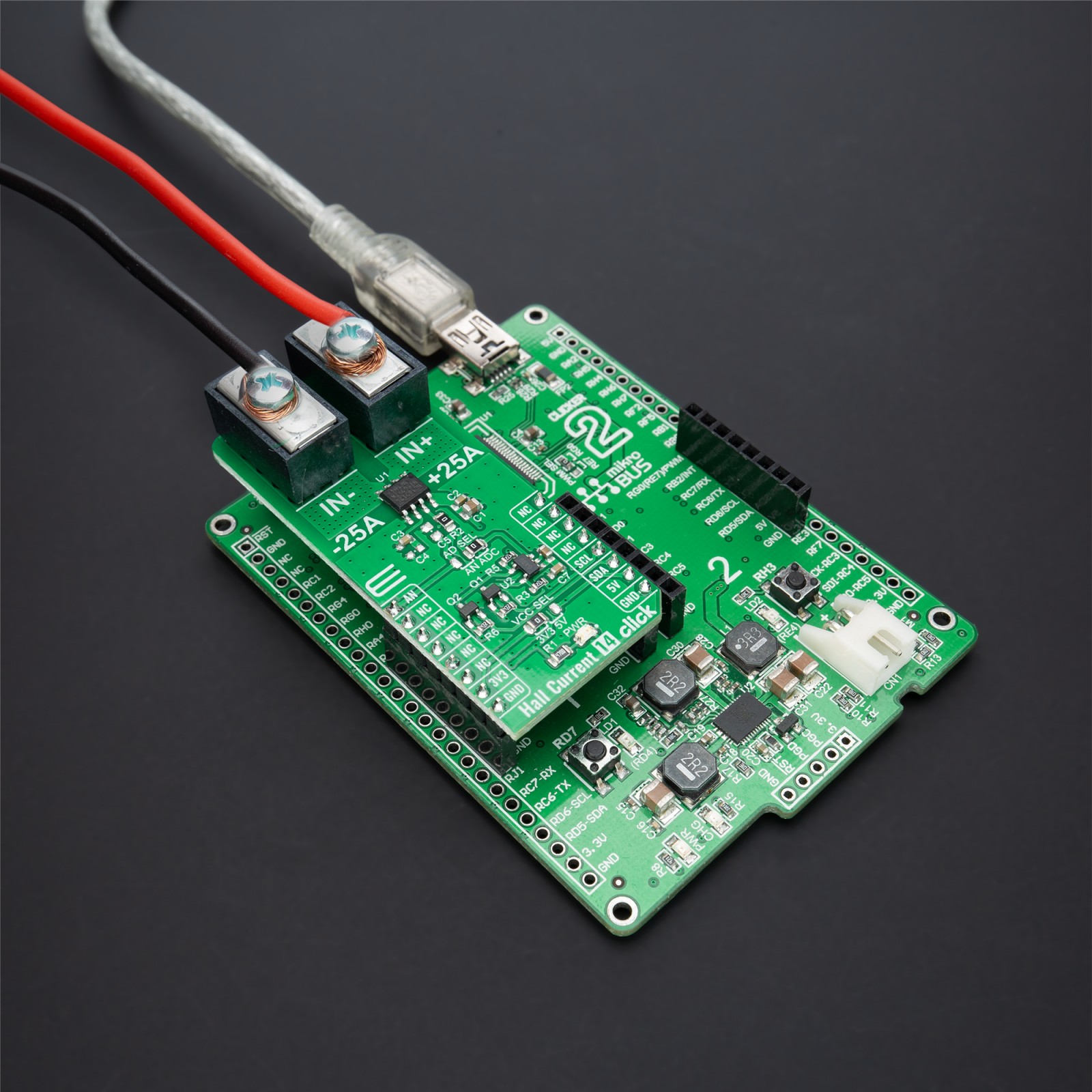
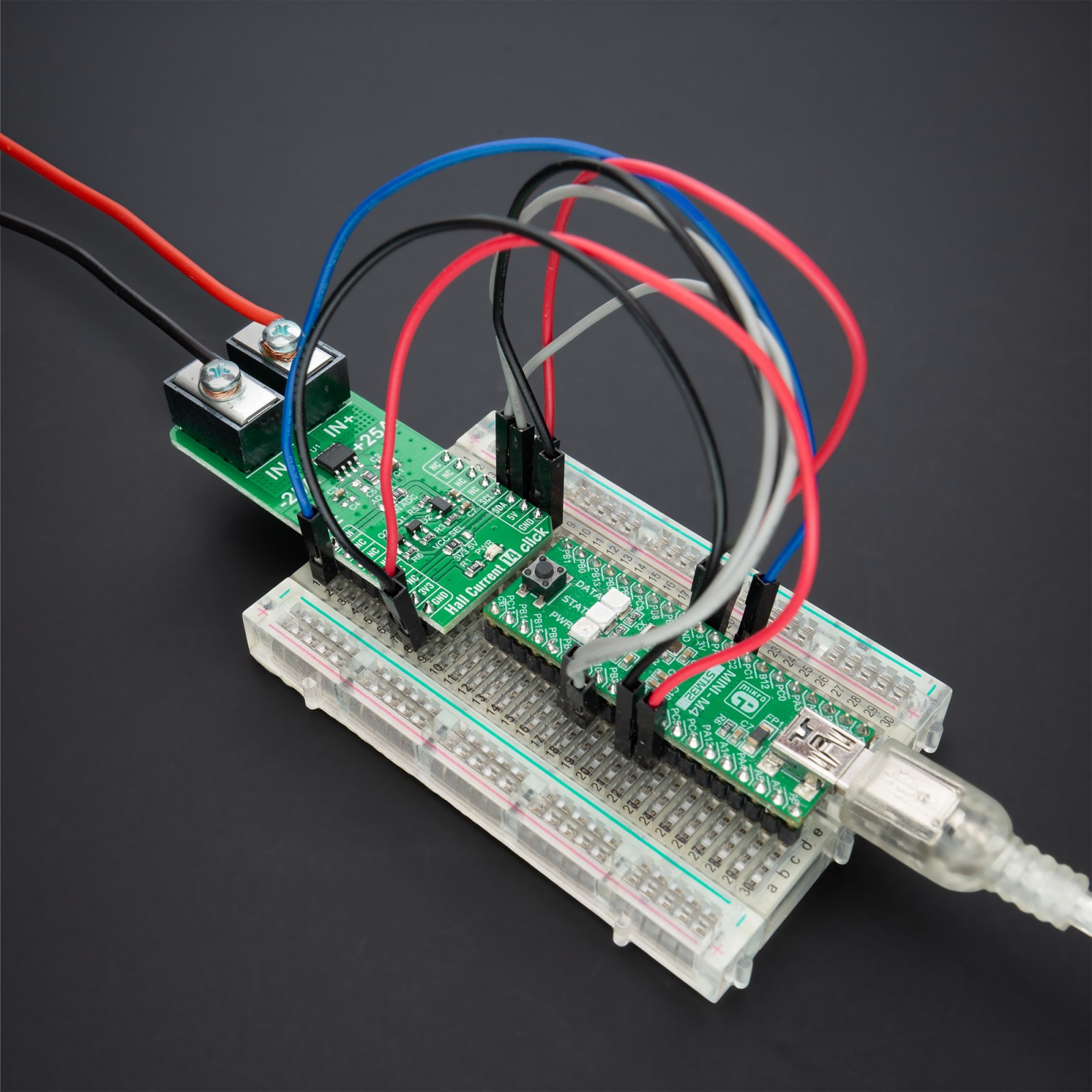
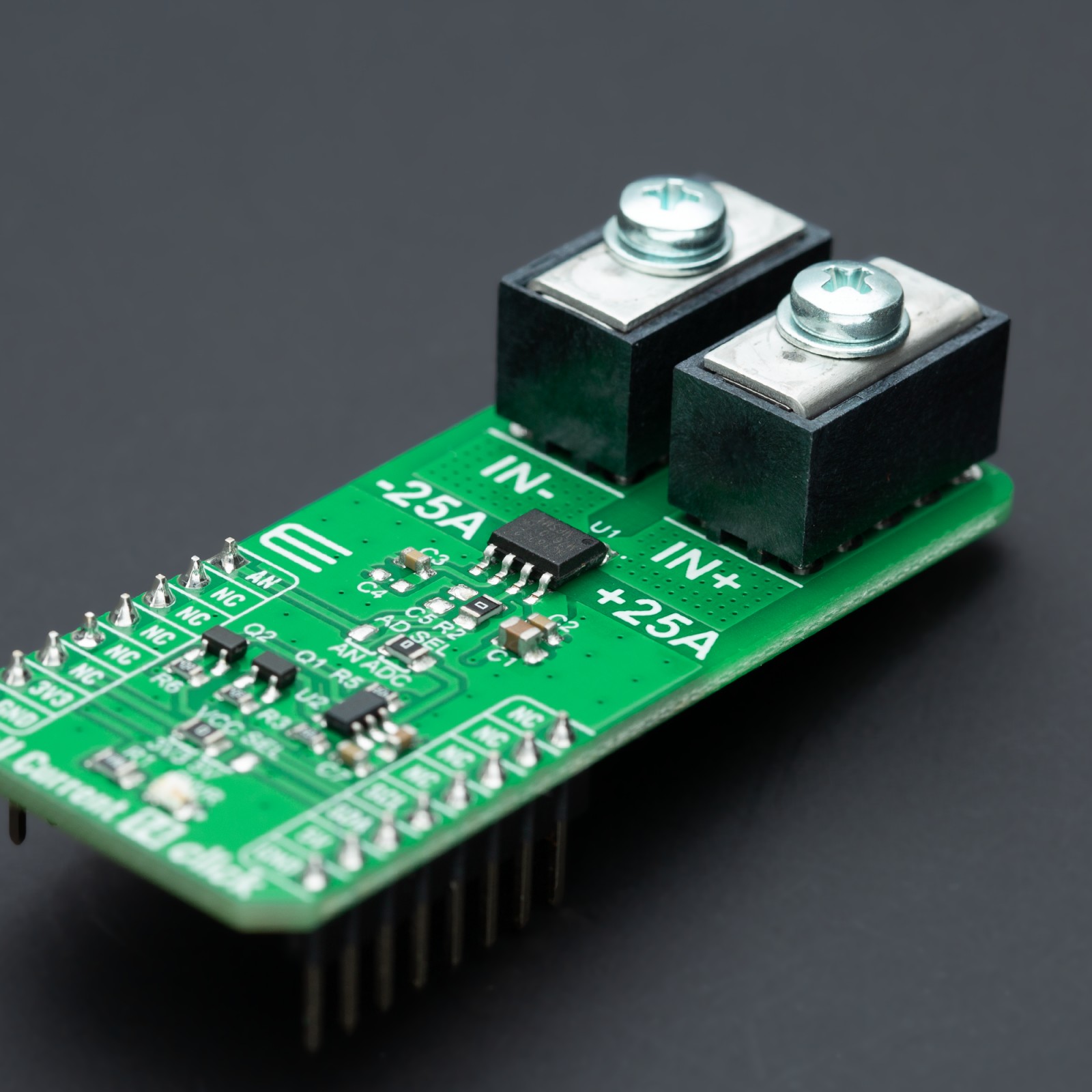
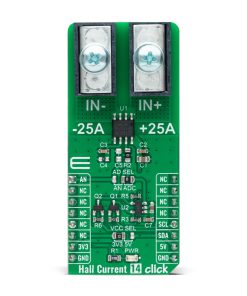
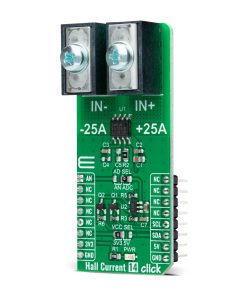
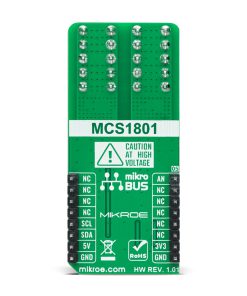
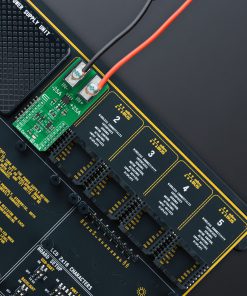
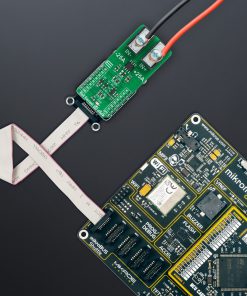
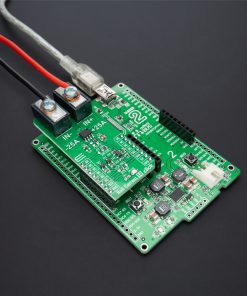
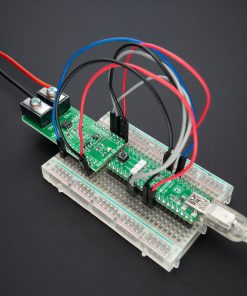
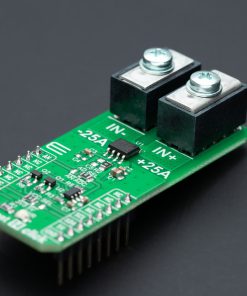
 DO NOT TOUCH THE BOARD WHILE THE LOAD IS CONNECTED!
DO NOT TOUCH THE BOARD WHILE THE LOAD IS CONNECTED!








